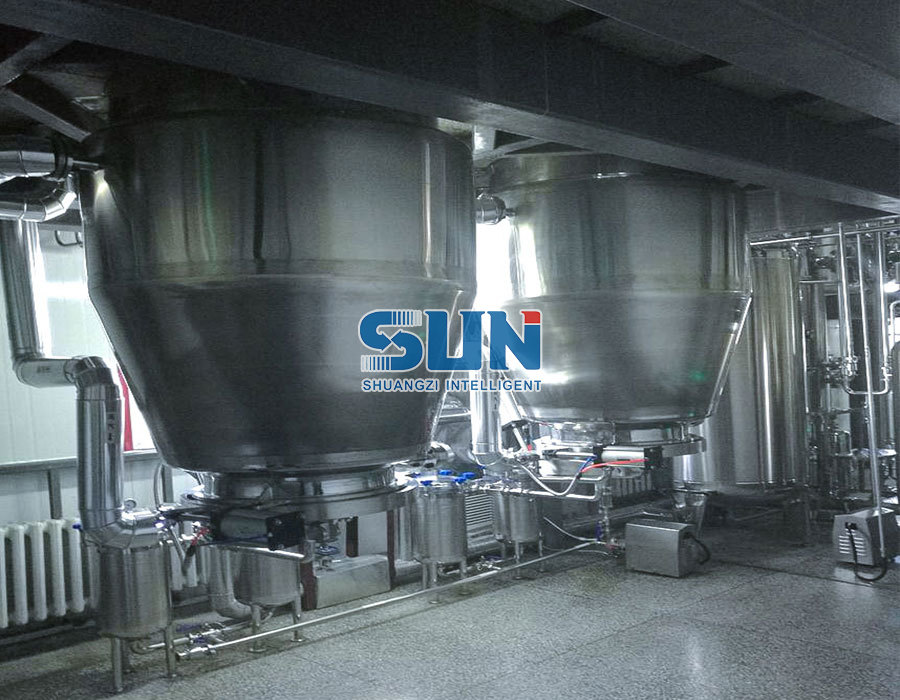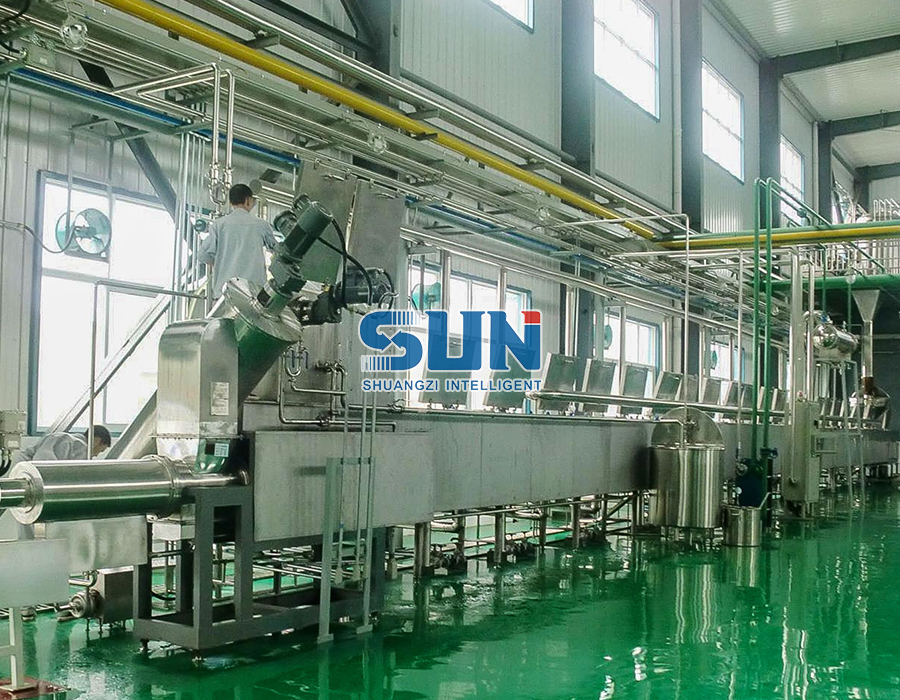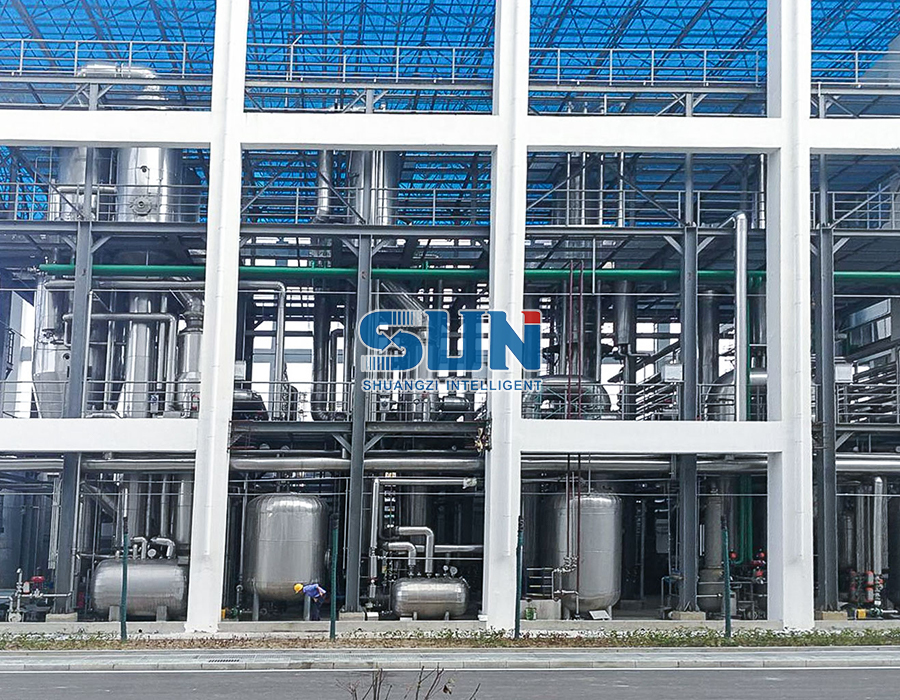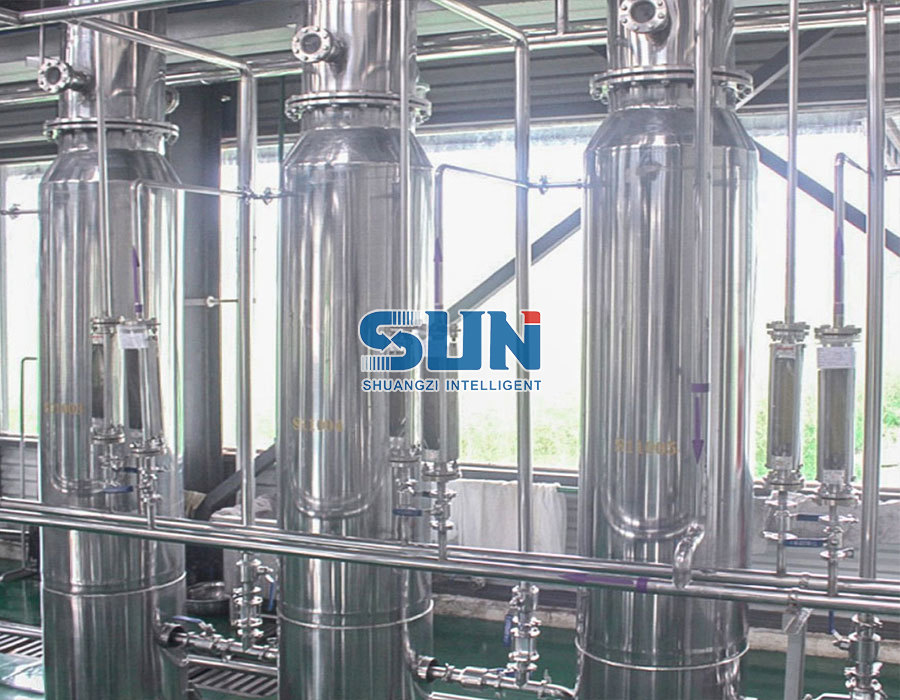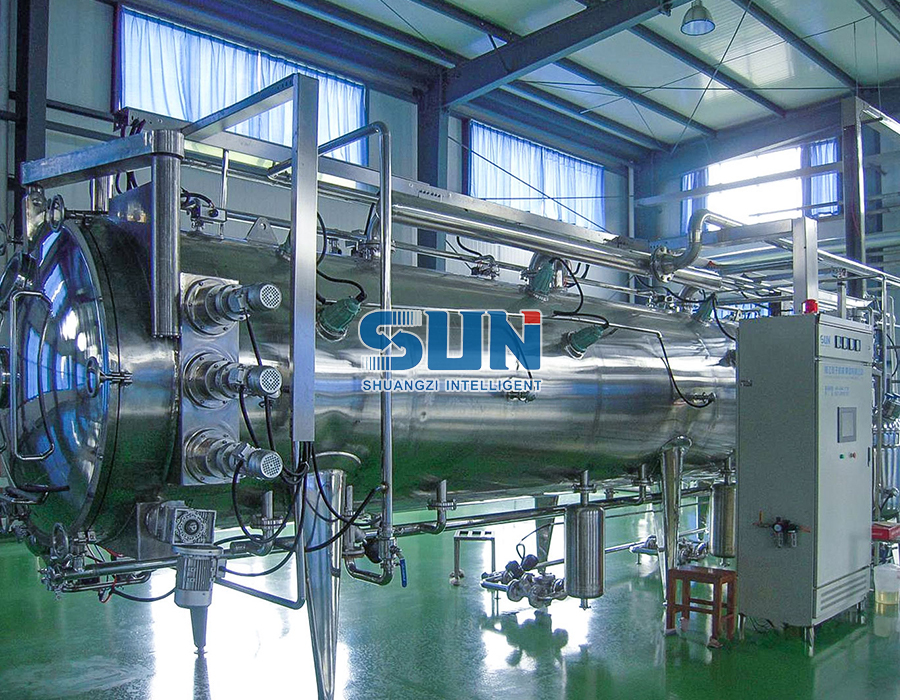External circulation evaporator is widely used in industries such as food processing, pharmaceuticals, chemicals, and sugar manufacturing to concentrate liquids efficiently. Among the components that make these evaporators effective, the heat exchanger plays a crucial role. Understanding its function is essential for operators, engineers, and anyone involved in thermal process management.
Understanding the External Circulation Evaporator
An external circulation evaporator is a type of evaporator in which the liquid is circulated outside the evaporator body while evaporation occurs in a separate chamber. Unlike falling film evaporators, where the liquid flows directly inside the evaporator tubes, the external circulation evaporator pumps the liquid through an external circulation loop. This design offers better handling of viscous liquids, solids-laden solutions, and heat-sensitive products.
The system typically consists of the following components:
- Circulation pump: Moves the liquid through the evaporator system at a controlled flow rate.
- Evaporation chamber: Where the solvent (usually water) is evaporated from the liquid.
- Heat exchanger: Transfers heat from a heating medium to the liquid to facilitate evaporation.
- Condenser: Condenses the vapor generated during evaporation.
- Vacuum system: Maintains low pressure to reduce boiling point and protect heat-sensitive materials.
Among these, the heat exchanger is central to the system’s energy efficiency and operational stability.
What is a Heat Exchanger?
A heat exchanger is a device designed to transfer heat between two or more fluids without mixing them. In the context of an external circulation evaporator, it allows the liquid being concentrated to absorb heat from a heating medium—commonly steam, hot water, or thermal oil. The goal is to raise the temperature of the liquid to the point where evaporation can occur efficiently while maintaining product quality.
Heat exchangers can take different forms, including:
- Shell-and-tube heat exchangers: The most common type in industrial evaporators. They consist of tubes inside a cylindrical shell, where one fluid flows through the tubes and the other around them.
- Plate heat exchangers: Composed of thin, corrugated plates that create a large surface area for heat transfer.
- Coil heat exchangers: Uses coiled tubes to achieve heat transfer in a compact space.
The choice of heat exchanger type depends on the characteristics of the liquid, viscosity, fouling tendency, and the required heat transfer rate.
How the Heat Exchanger Works in an External Circulation Evaporator
In an external circulation evaporator, the heat exchanger serves as the primary source of energy input. The process can be described step by step:
- Liquid circulation: The pump draws liquid from the evaporator’s holding tank and sends it through the heat exchanger.
- Heat transfer: The liquid absorbs heat from the heating medium through the exchanger’s surfaces.
- Temperature rise: The heated liquid’s temperature rises to just below or at its boiling point, depending on system pressure.
- Return to evaporator: The hot liquid is returned to the evaporation chamber, where rapid evaporation occurs due to the supplied heat and vacuum conditions.
- Continuous circulation: This process repeats, ensuring a uniform temperature throughout the system and preventing local overheating or scorching.
By maintaining consistent heating, the heat exchanger ensures that evaporation occurs efficiently and that the product remains stable in terms of quality and composition.
The Role of the Heat Exchanger: Key Functions
1. Energy Transfer
The most fundamental role of the heat exchanger is to transfer energy from the heating medium to the liquid. In industrial operations, energy efficiency is critical. A well-designed heat exchanger ensures that maximum heat is transferred with minimal energy loss. This directly impacts operating costs and sustainability.
2. Temperature Control
Temperature control is crucial, especially when dealing with heat-sensitive materials like fruit juices, dairy products, or pharmaceutical solutions. The heat exchanger allows precise control over the liquid temperature, ensuring that it reaches the desired evaporation point without exceeding limits that could degrade the product.
3. Preventing Local Overheating
In any evaporator system, uneven heating can cause “hot spots” where the liquid may burn, caramelize, or denature. By circulating the liquid through a heat exchanger, heat is applied more uniformly, preventing localized overheating and maintaining product integrity.
4. Reducing Fouling
Fouling is the accumulation of unwanted deposits on heat transfer surfaces. In external circulation evaporators, the circulating liquid moves continuously through the heat exchanger at controlled velocity. This movement reduces the likelihood of deposition on the heat transfer surfaces and enhances long-term performance.
5. Enhancing Evaporation Efficiency
Efficient evaporation depends on a consistent supply of heat. The heat exchanger ensures that the liquid entering the evaporator chamber is already heated, which accelerates the evaporation process. This not only increases throughput but also improves the quality of the concentrated product.
6. Compatibility with Various Liquids
External circulation evaporators often process viscous liquids or those containing solids. The heat exchanger allows these liquids to be heated gently without excessive shear or agitation, preserving their structure and preventing clogging or damage to equipment.
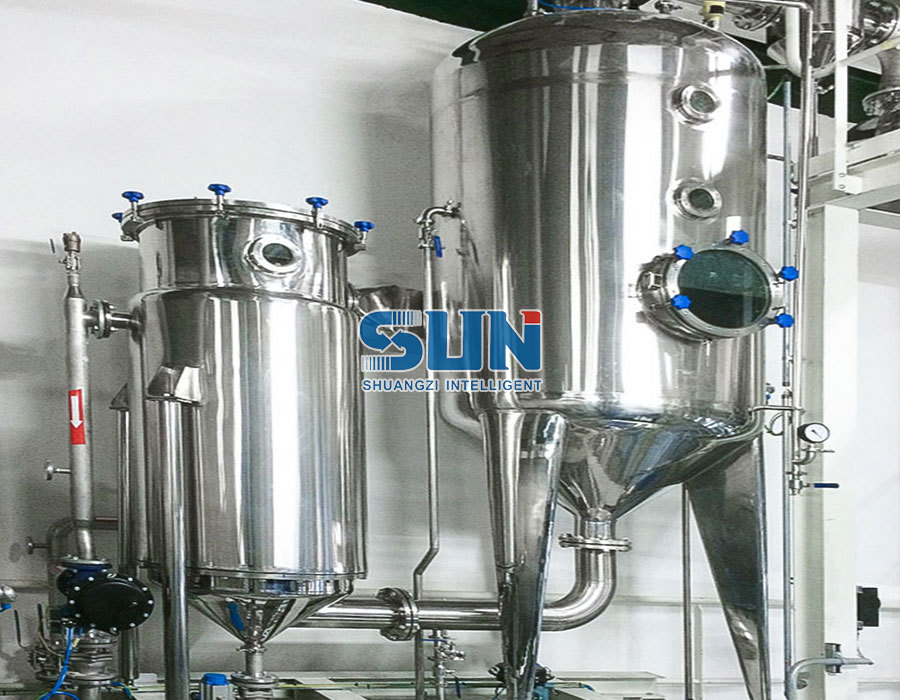
Types of Heat Exchangers Used in External Circulation Evaporators
Shell-and-Tube Heat Exchangers
- Advantages: Durable, suitable for high temperatures and pressures, easy to clean for some designs.
- Applications: Common in sugar, chemical, and pharmaceutical industries.
Plate Heat Exchangers
- Advantages: Compact, high heat transfer efficiency, easy to disassemble for cleaning.
- Applications: Suitable for heat-sensitive liquids and products with low fouling tendencies.
Coil Heat Exchangers
- Advantages: Compact, simple design, can be inserted into tanks or evaporator bodies.
- Applications: Often used in small-scale operations or pilot plants.
The choice of heat exchanger affects the overall performance, maintenance schedule, and energy consumption of the evaporator.
Factors Affecting Heat Exchanger Performance
- Liquid properties: Viscosity, solids content, and thermal sensitivity influence heat transfer efficiency.
- Flow rate: Proper circulation ensures uniform heating and prevents fouling.
- Temperature differential: A larger temperature difference between the heating medium and liquid increases heat transfer but may risk product degradation.
- Surface area: Larger surface areas facilitate better heat transfer.
- Material selection: Corrosion-resistant materials like stainless steel are often used to extend lifespan.
Maintenance and Operational Considerations
- Regular cleaning: To prevent scaling and fouling, heat exchangers should be cleaned according to the manufacturer’s guidelines.
- Monitoring temperature and pressure: Sensors help detect inefficiencies or potential overheating.
- Inspection for leaks: Ensures that the heating medium does not contaminate the product.
- Pump and flow management: Adequate circulation ensures the heat exchanger functions effectively.
Benefits of a Well-Designed Heat Exchanger in an External Circulation Evaporator
- Energy efficiency: Reduces energy consumption by optimizing heat transfer.
- Improved product quality: Prevents overheating and preserves nutritional or chemical properties.
- Reduced downtime: Lowers fouling and maintenance frequency.
- Versatility: Accommodates a variety of liquids and industrial applications.
Conclusion
The heat exchanger is an indispensable component of an external circulation evaporator. Its role extends far beyond simply providing heat—it ensures energy efficiency, product quality, and operational stability. By transferring heat efficiently, controlling temperature, preventing fouling, and enhancing evaporation rates, the heat exchanger allows external circulation evaporators to handle a wide range of liquids, from viscous syrups to heat-sensitive pharmaceutical solutions.
Understanding the importance of the heat exchanger helps operators make informed decisions about equipment selection, operation, and maintenance. For industries seeking reliable and efficient concentration processes, attention to heat exchanger design and performance is critical for achieving consistent, high-quality results.


 英语
英语 俄语
俄语